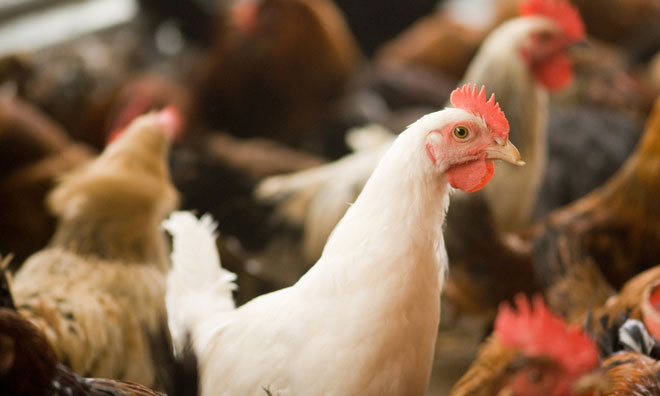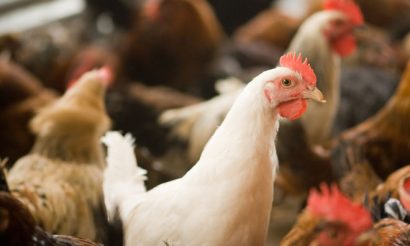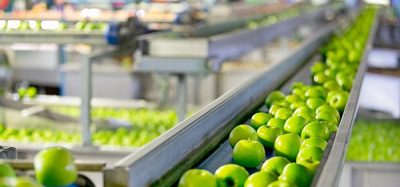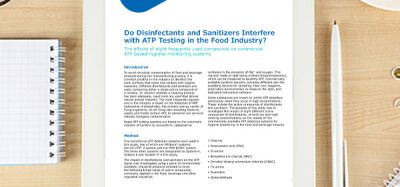Campylobacter most prevalent in poultry in late summer
- Like
- Digg
- Del
- Tumblr
- VKontakte
- Buffer
- Love This
- Odnoklassniki
- Meneame
- Blogger
- Amazon
- Yahoo Mail
- Gmail
- AOL
- Newsvine
- HackerNews
- Evernote
- MySpace
- Mail.ru
- Viadeo
- Line
- Comments
- Yummly
- SMS
- Viber
- Telegram
- Subscribe
- Skype
- Facebook Messenger
- Kakao
- LiveJournal
- Yammer
- Edgar
- Fintel
- Mix
- Instapaper
- Copy Link
Posted: 2 December 2016 | New Food | No comments yet
According to a recent study, Campylobacter is considerably more common in Finnish poultry meat towards the end of summer than at any other time of the year…


According to a recent study, Campylobacter is considerably more common in Finnish poultry meat towards the end of summer than at any other time of the year.


On an annual basis, just under ten per cent of Finnish chicken and just over three per cent of turkey sold fresh in retail stores were found to be contaminated with Campylobacter. The study was a joint project of the Finnish Food Safety Authority Evira and the University of Helsinki, and it also involved developing a new statistical model. The model was used to estimate the prevalence and concentrations of Campylobacter in poultry, pork, and beef sold to consumers at retail level. No Campylobacter was detected in the pork and beef samples collected from retail stores.
“During the one year that we analysed, approximately eight per cent of Finnish broiler meat and approximately three per cent of turkey meat tested positive for Campylobacter. The prevalence in pork and beef was estimated as very low, as no Campylobacter was detected in the almost 800 samples that we analysed”, says Researcher Antti Mikkelä from Evira’s Risk Assessment Research Unit
The three-year project of Evira and the University of Helsinki Department of Food Hygiene and Environmental Health studied the risk of food poisoning from pork, beef, and poultry produced in Finland. The study focused exclusively on fresh Finnish meat. The total number of samples was almost 2 000. Although all the samples collected between 2012 and 2014 were from food shops in Helsinki, they represent more than 90 % of all fresh Finnish meat sold across the country. Marinated and salted meat can also cause food poisoning, although processing is believed to reduce Campylobacter concentrations in meat. Only approximately 20 – 30 % of Finnish meat sold in shops is not marinated, and foreign meat sold in Finland is almost invariably marinated.
Estimates based on a statistical model
“The method we used is completely new in this kind of research. It takes account of concentrations below the limit of determination of the microbiological method, temporal variation, as well as within-batch and between-batch variations in prevalence and concentrations. Ignoring these factors leads to incorrect prevalence and concentration estimates. Our model is also adaptable for other pathogens if the same type of microbiological data set is available”, says Senior Researcher Jukka Ranta (PhD) from the Risk Assessment Research Unit.
The number of living bacteria in a 150-gram portion of meat was estimated at approximately 300 on average in contaminated chicken and at just approximately 45 in turkey. The concentrations were below the limit of determination of the microbiological method in a considerable percentage of the contaminated samples, but the new statistical model also allowed these extremely low concentrations to be taken into account.
Hygienic meat handling in kitchens of crucial importance
Good kitchen hygiene and the cooking of meat lower the risk of contamination.
“Bacteria can be transferred from fresh meat to cooked food via chopping boards or kitchen tools, for example, during food preparation. Despite the generally relatively low levels of Campylobacter in Finnish meat, the number of bacteria thus remaining in the food can be high enough to cause food poisoning. Using pre-packaged, precut meat reduces the need to handle the meat in the kitchen, which lowers the risk of contamination”, explains Senior Researcher Marjaana Hakkinen (PhD) from Evira’s Food and Feed Microbiology Research Unit.
Campylobacter is among the most common causes of gastroenteritis in EU countries. In Finland, approximately 4 000 – 5 000 cases of campylobacteriosis are reported annually, the majority of which are cases contracted abroad. The actual number of cases is nevertheless believed to be higher.
The number of cases that are caused by food products is difficult to estimate accurately, as there is considerable uncertainty relating to cooking methods and the volume of consumption. The number could be substantial, as it is estimated that the number of meals cooked in Finland each year that contain Finnish meat amounts to hundreds of millions.
“Similar kinds of studies would need to be carried out on both foreign and Finnish marinated meat in order to also assess the risk attached to marinated products”, says Head of Unit Pirkko Tuominen (DVM, PhD).








